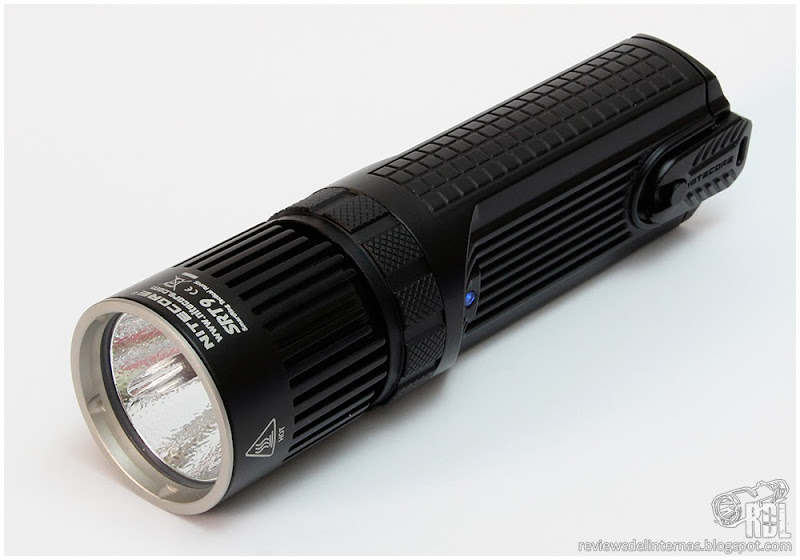
NITECORE SRT9
LED: CREE XHP50 CW, 4x "5mm" LEDs
Battery: 2× 18650, 4x ® CR123a
Modes: Variable adjusting, Red, Green, Blue, UV light and two strobes
Switch: Magnetic ring and forward switch on the taicap
Date: July 2017
INTRODUCTION
The third generation of Nitecore equipped with magnetic ring is already here, and between them we have a novelty quite interesting. This is the SRT9, a flashlight that uses two 18650 batteries placed physically in parallel, so it maintains a length similar to that of a single 18650 battery flashlight.
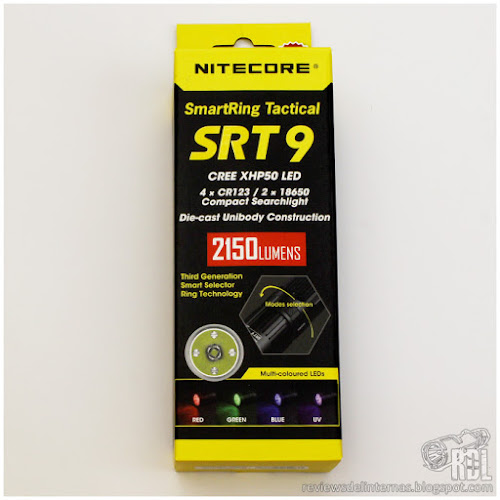
The box follows the line of the rest of the products of the brand, and shows printed in full color indications and characteristics on the flashlight.
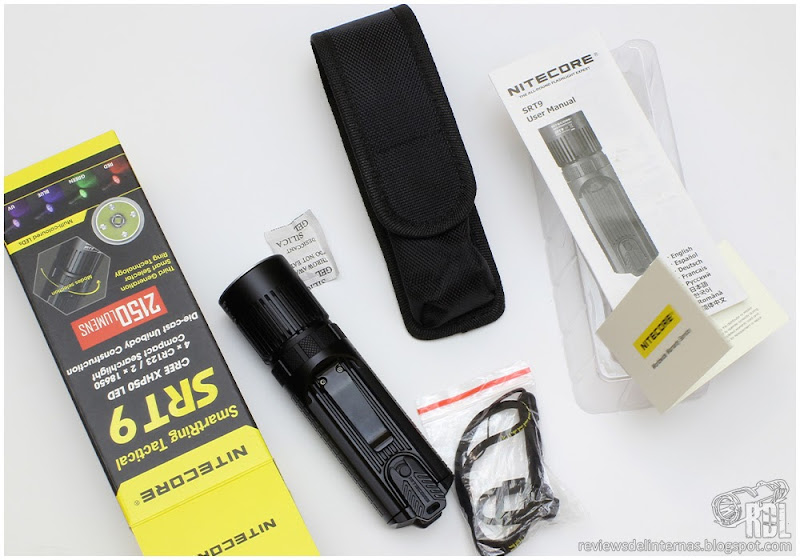
Inside the box we find the flashlight, a textile holster, wrist strap, spare tailcap gasket and user manual (now also in Spanish, among many other languages). Inside the flashlight we will find an anti-humidity gel sachet.
EXTERIOR FINISHING
The SRT9 has an exterior appearance that is reminiscent, quite broadly, with the EC4 although incorporates some new features not seen in the now old Explorer.
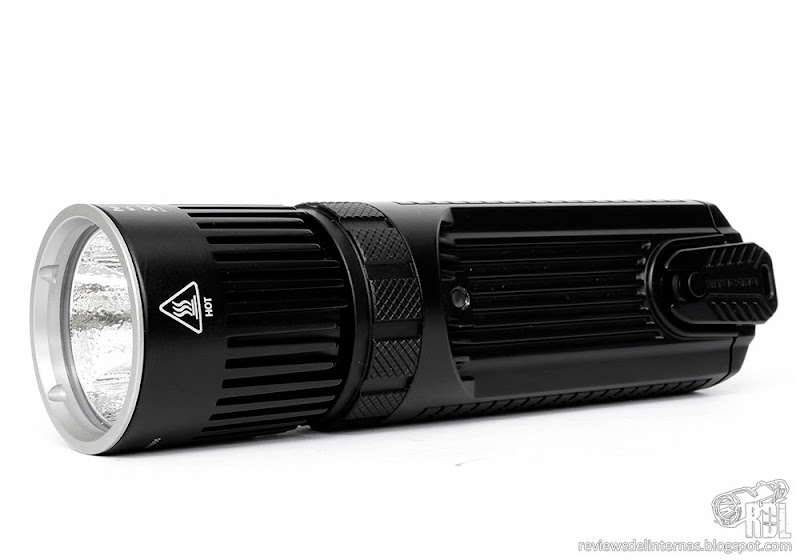
The flashlight is made by injection of liquid metal, die-cast. This technique allows greater flexibility when designing and producing the metal parts of the light, allowing greater rigidity of the assembly and, therefore, better management of thermal dissipation.
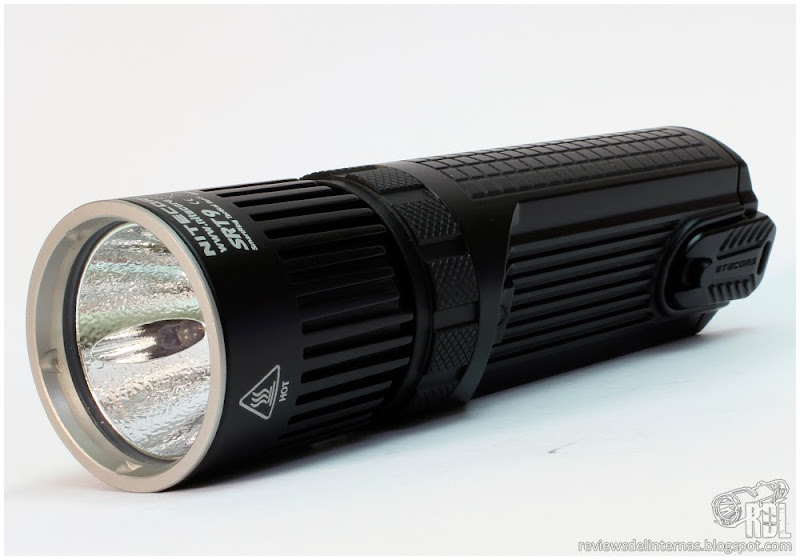
The body is made of aluminum, and has an anodized finish in matt black color very interesting.
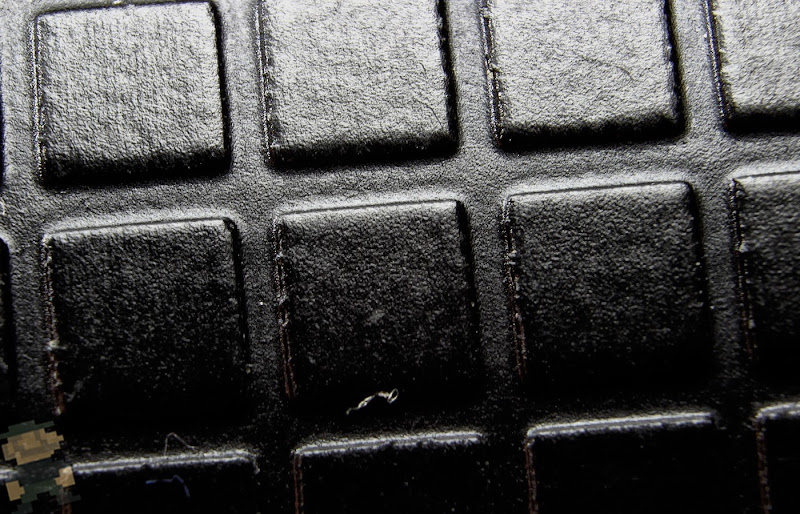

The tone of the anodizing is uniform between the parts that compose the flashlight, and the logos and engravings on it are outstandingly defined.

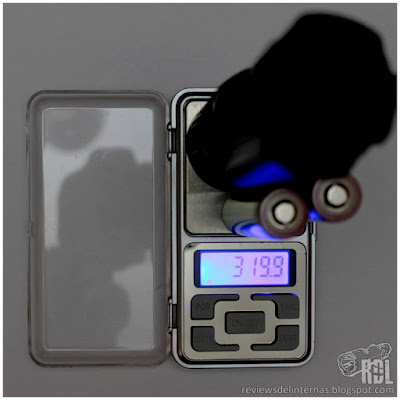

The optical has identical dimensions to many other flashlights of the brand, with about 40mm in diameter, as for example in the EC4, SRT7GT, P25 … The total length of the torch is quite contained, somewhat less than 150mm.
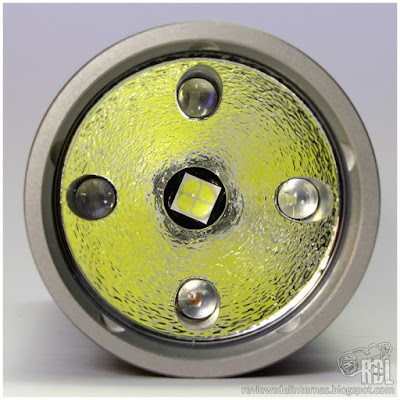
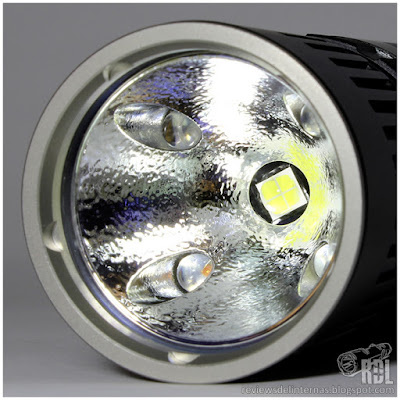
The optics are composed of a smooth steel bezel, glass lens with anti-glare treatment, OP reflector with four holes located approximately 90 ° apart for auxiliary color light and in CREE XHP50 perfectly placed in the center.
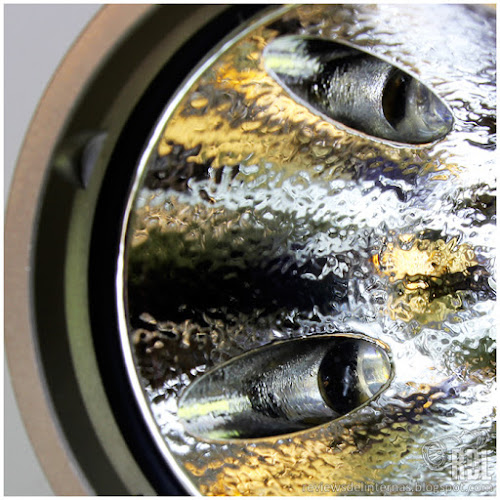
Nitecore again bets on the 5mm LEDs for auxiliary color light, installing them similarly to the one we saw in the SRT7.
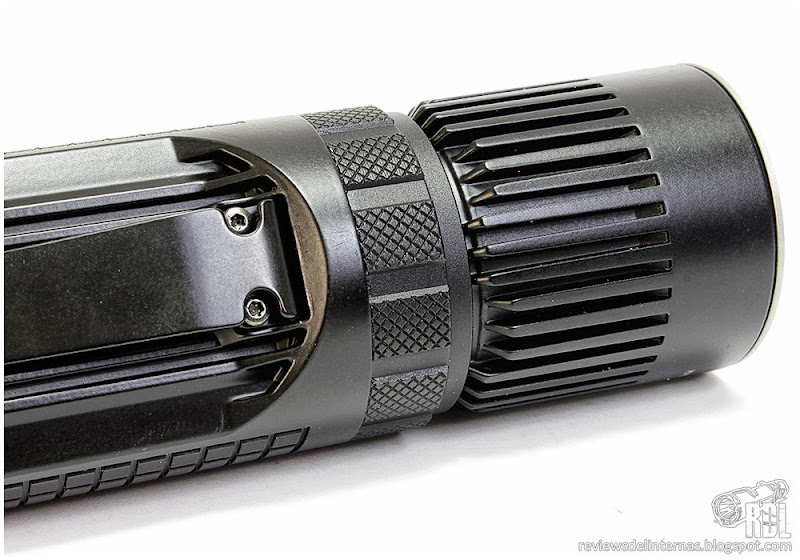
The head of the torch is completely surrounded by small dissipating fins. The magnetic ring has a rhomboid knurling finish separated by smooth tracks, so its feel is really good. The detents feeling for each position of the ring are excellent.


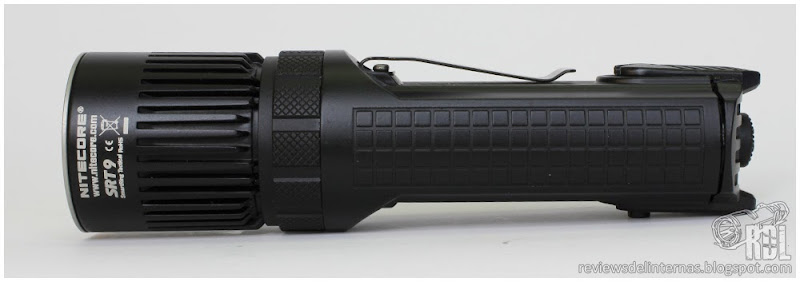
The SRT9 has a screwed clip located on the side of the flashlight. Clip tension is medium-high. On the side opposite the clip we find a blue LED indicator, which serves as both locator and low voltage warning.
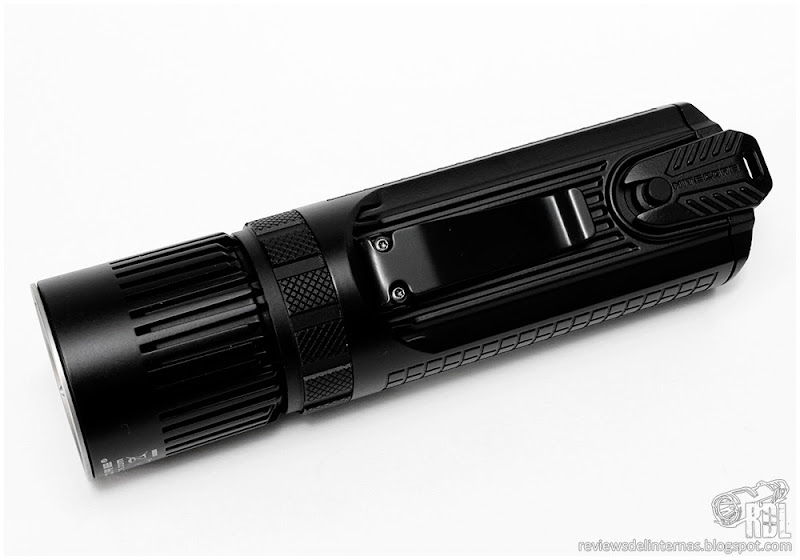
The body of the flashlight shows a texture of dissipating fins in its central part, while at the ends it is finished with a texture of squares.
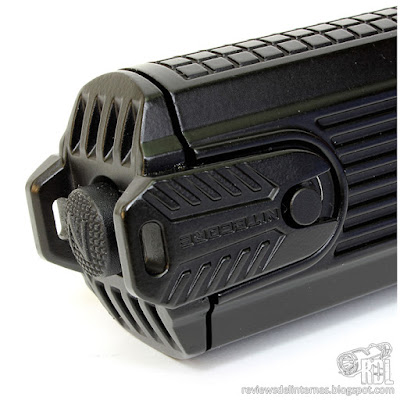

The tailcap closure system is quite new. Instead of using the classic threaded closure system, Nitecore has implemented a "snap-on" locking system, where the tailcap is attached to the flashlight by means of two clamps at both ends.
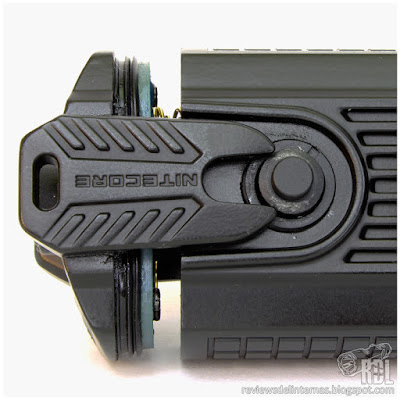
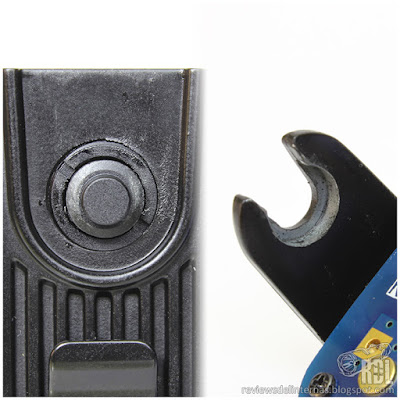
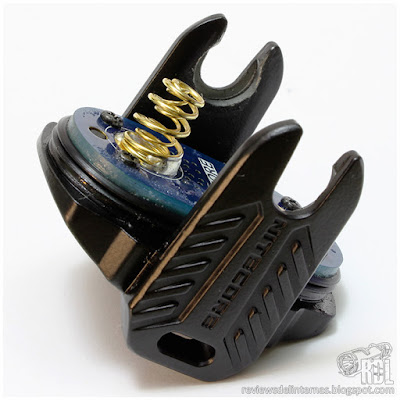

The tailcap has a double spring for the negative contact, while the positive contact protrudes slightly, although it is surrounded by screws that in addition to holding the PCB act as protection mechanism against reverse polarity, so in the SRT9 needs 18650 batteries with "button top" positive pole.
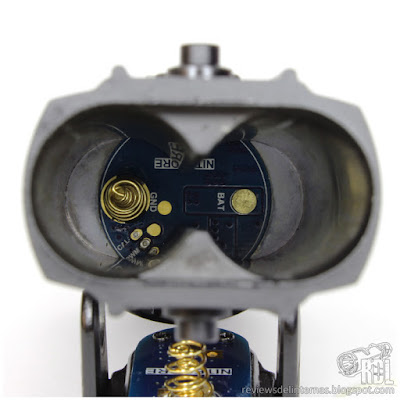

The contacts inside the flashlight have the same finish as the tailcap. The battery-room space is generous and the SRT9 can be used with protected batteries without any problem. The shape of the spare gasket gives us an idea of the type of closure that this new system offers. The base of the tailcap allows to place the flashlight in tailstand in a stable way.
USER INTERFACE
With the combination of magnetic ring that combines fixed positions by detents with a zone of variable adjustment and a mechanical switch located in the tailcap the device guarantee a user interface very simple, friendly and easy to master in seconds.
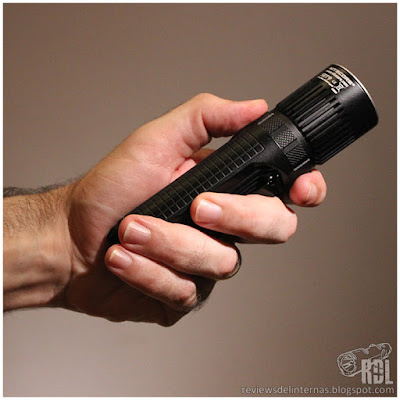
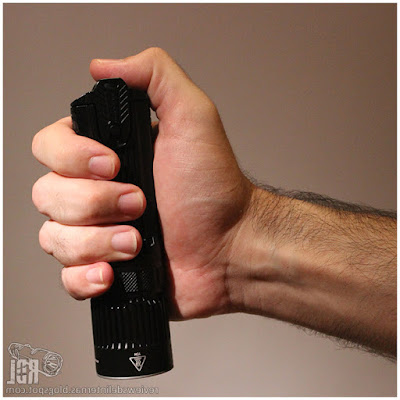
- Switching on and off: The SRT9 is powered by a mechanical forward switch on its tailcap. The flashlight will turn on in the mode corresponding to the position of the ring.
- Standby position: Between the different ring detents, we find a position where the flashlight is virtually turned off, showing an LED flashing on the side of the flashlight every approximately two seconds, very useful as a locator. When the flashlight is in this mode there is a small battery consumption to keep the system latent.

- Variable adjustment: From the standby position, by turning the ring clockwise, we enter the free-of-detents zone, where we can adjust the light output of the flashlight between a range from "0 to 2150LM". When reaching the maximum we find a detent that will be very useful if we want to use the flashlight as if a "single-mode" was, with always the maximum power available and controlled by the tactical rear switch.

- Stroboscopic Mode: From the maximum power detent, there is one last position to the right, where the stroboscopic mode is located. Again, the combination of forward clicky and magnetic ring gives us the possibility of having the light ready to turn on strobe (defensive or offensive use) directly from the tailcap switch.

- Auxiliary Color and UV light: Back to the standby point, and instead of turning the ring to the right, we do now left. The first detent we found belongs to UV light, the next to the red light, followed by the green one and a further detent leads us to the blue light. This multicolour light produced by the LEDs integrated in the reflector offers performance not comparable to the XHP50. Nitecore has used an LED for each color, which greatly reduces the artifacts generated compared to a RGB 5mm LED, but does not eliminate them completely.
- Police strobe: The next stop on the left from the blue light leads to a police stroboscopic mode, alternating fast bursts of red and blue light.
- Beacon mode: The last left ring detent is reserved for beacon mode, in which the flashlight emits a brief but very powerful flash of white light every two seconds, as a location signal.
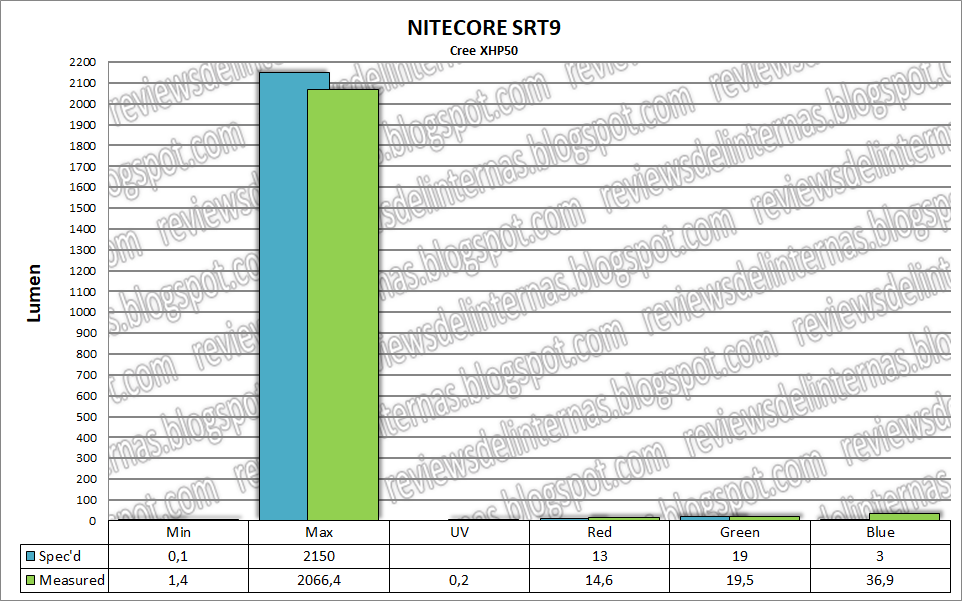
(All measurements are taken following the ANSI NEMA FL1 procedure, taking as value the highest point of the reading between the second 30 and 120 after its activation)
Although in the documentation of the flashlight there's a reference is made to the minimum output being 0.1 lumen, after my own test the minimum output that I can stabilize before the flashlight drops to the standby mode is 1.4 lumen. It is not excessively high, but certainly 0.1 lumen would have been much more interesting. The ring travel in its variable adjustment zone is very good, with a very visually-balanced progression. The measurements of the colors are anecdotal, since the photosensor of my integrating sphere does not guarantee any reliability in non-visible light. The intensities are achieved by PWM, although it is very difficult to notice because it is high frequency.
PERFORMANCE
This new family of CREE emitters needs batteries capable of continuously delivering large currents, so I have re-performed the sphere test for maximum performance with both IMR and standard NCR batteries.
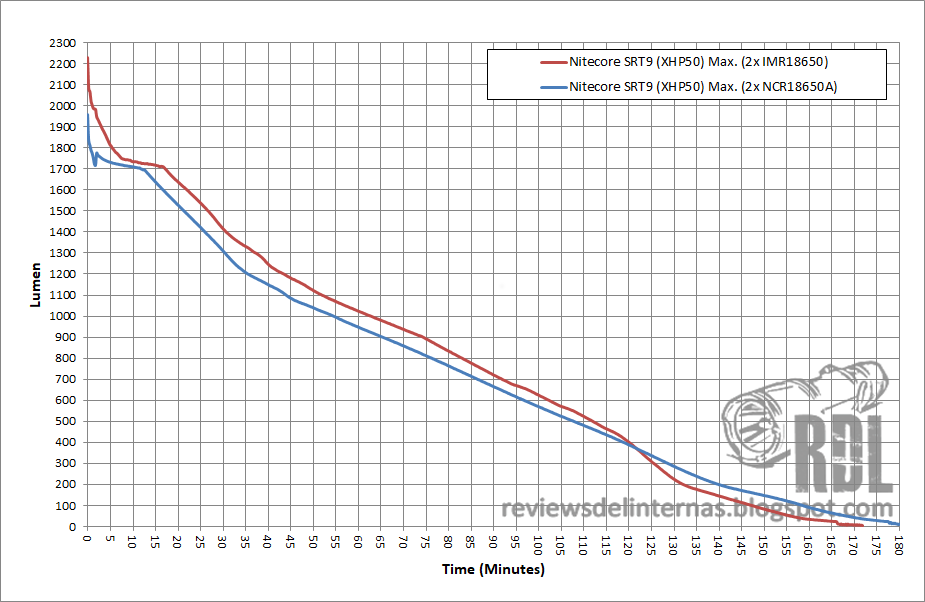
The SRT9 shows an unregulated performance, which maximizes the time of continuous use with a set of batteries showing a line in almost constant fall.
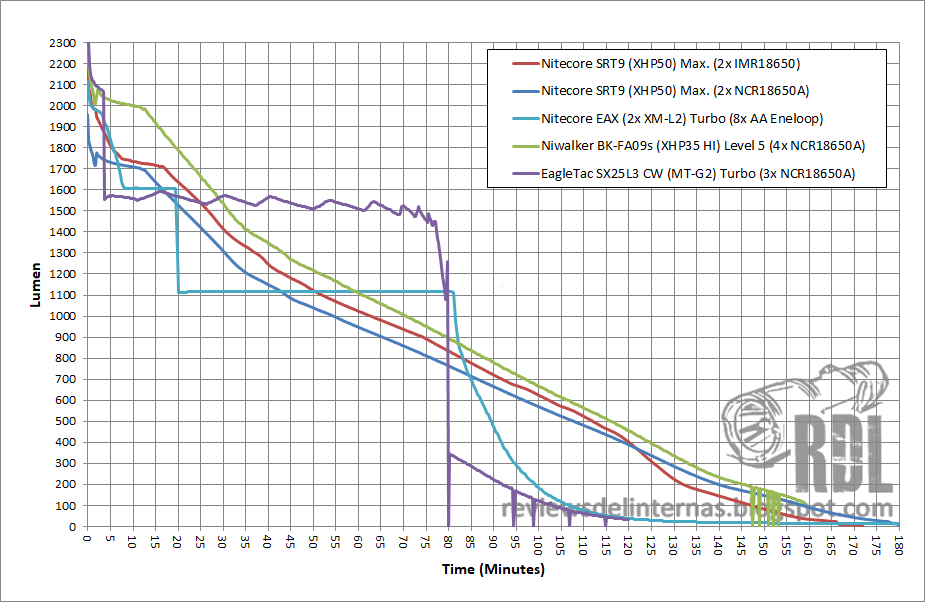
The result is, in my opinion, astounding. The SRT9 has a very high efficiency, able to get the last drop of juice to the batteries.
BEAM PROFILE
The large emitting surface of the XHP50 and the reflector with OP finish offer a clearly flooding projection, although thanks to the high output of which the LED is capable of and the dimensions of the reflector the flashlight manages to stay near the quarter of kilometers in ANSI throw.
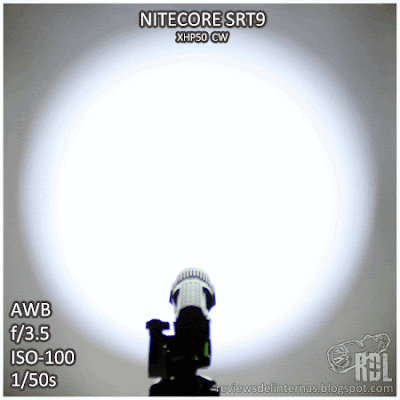
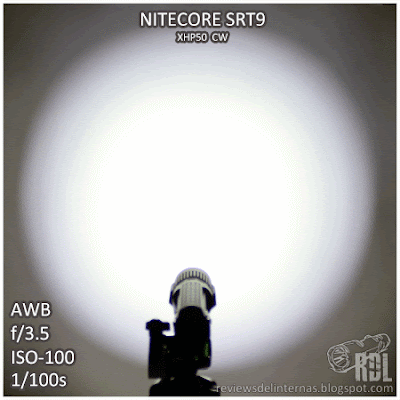
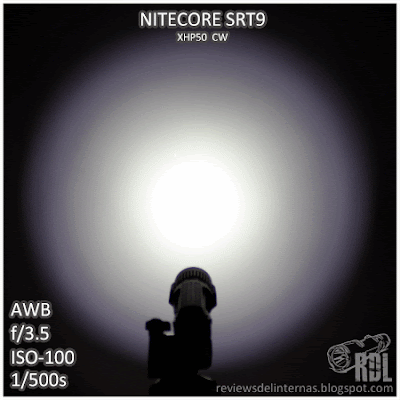

In white light mode the flashlight does not show any trace of artifacts or rings that could be generated by the LEDs for auxiliary color light.
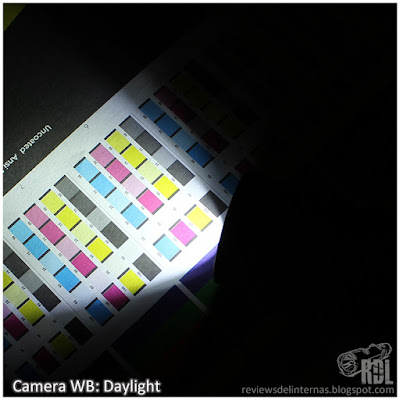

The tint is the typical cold white with greenish-yellowish hues especially in the wide corona that surrounds the hotspot.
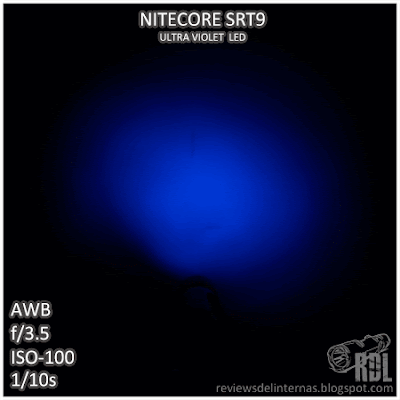



The beam profile of the auxiliary light of color is… well… different. Although Nitecore has used an unique LED for each of the applications (instead of RGB LEDs as in SRT7), the projection is quite asymmetrical because of the light bounced unevenly by the main reflector of the XHP50.
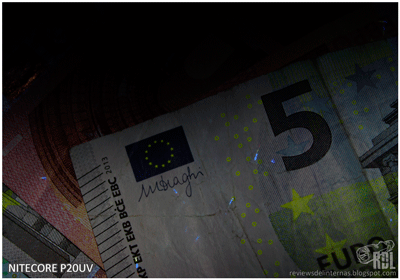
The ultraviolet LED has a wavelength of 365nm, although if we compare it against that used in the Nitecore P20UV we will see that the one installed in the SRT9 generates much more visible (violet) light.

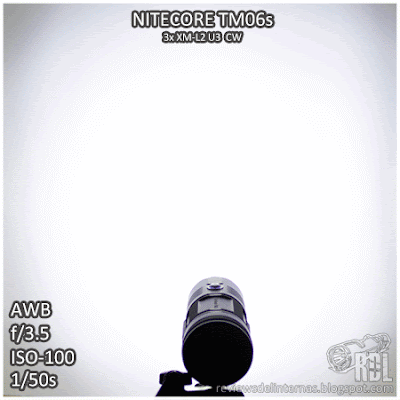

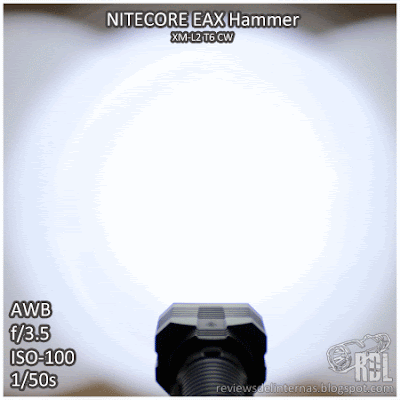
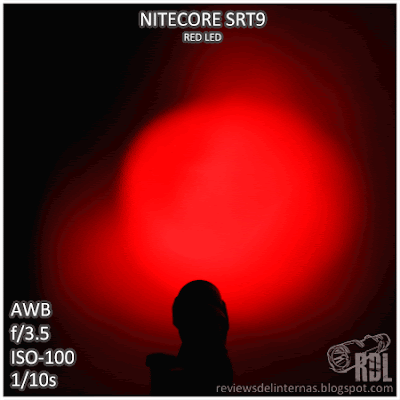
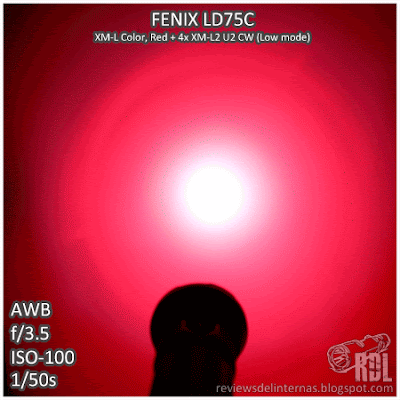
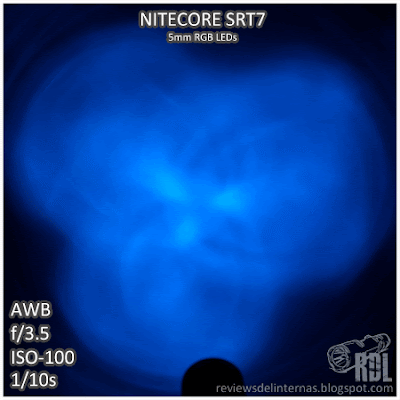

PERSONAL CONCLUSION
The concept of two 18650 batteries physically in parallel for a high performance flashlight has been now some time with us. There are many brands that have launched their models, although perhaps the most relevant of all is the Fenix TK35 for being the pioneer in the segment. Nitecore has the P36, EC4 and now also this SRT9.
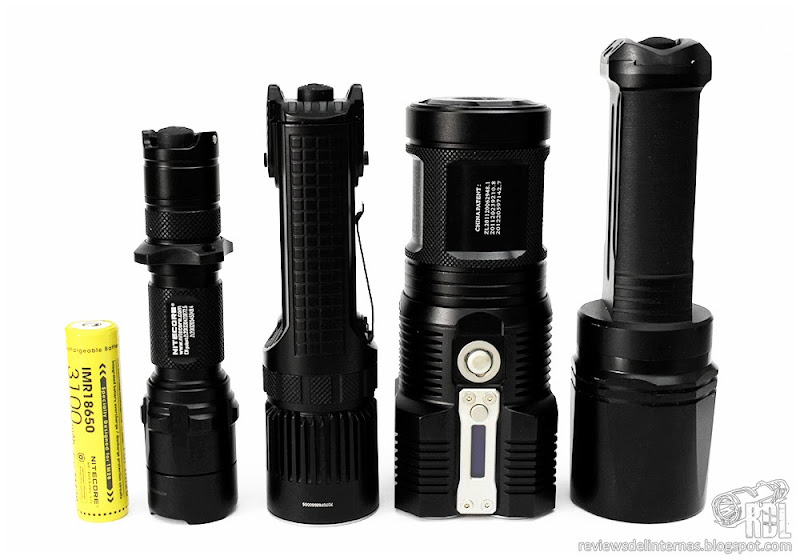
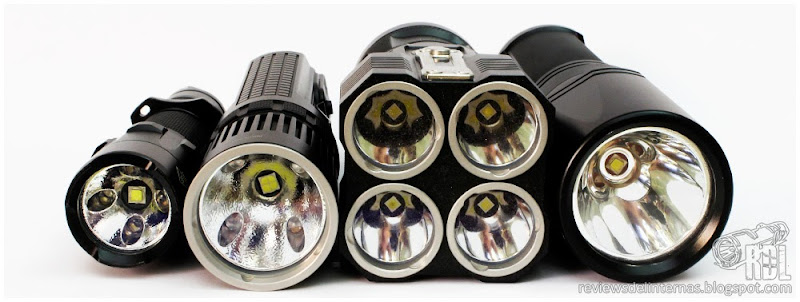
Nitecore P20UV · Nitecore SRT9 · Nitecore TM28 · "Fenix TK35"
Negative aspects: It has certainly been difficult to find negative points or with room for improvement of this SRT9. Perhaps the flashlight is a little picky with the batteries, since it requires that the anode protrude enough to circumvent the protection of reverse polarity that the screws that hold the PCB of the switch offer. The closure system, though novel and very practical, does not inspire me the same reliability of durability as a good old square-cut anodized thread, although this is something completely subjective and I haven't experimented any flaws with this system.
Positive aspects: In general the SRT9 has surprised me for several reasons: It is the first "die-cast" flashlight that passes through my hands and the mechanical finish, with all those small fins and complicated shapes that make up the body have charmed me. The feel of the magnetic ring is excellent, with all the detents perfectly positioned. The interface, although basic and simple, is effective and easy to master in seconds. The variable adjustment zone has an excellent progression. The projection of the XHP50 is clean and without traces of artifacts or rings. The color light … is better than in the SRT7, where the use of RGB LEDs instead of one for each color generated many more artifacts. The efficiency level, for being 2× 18650 is astonishing and comes dangerously close to that obtained in flashlights with 4× 18650 from not so long ago. In my humble opinion, the Nitecore SRT9 is one of the roundest releases of the brand in recent years.
Nitecore SRT9 provided by Nitecore for analysis and review.

